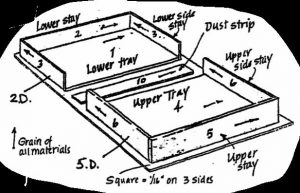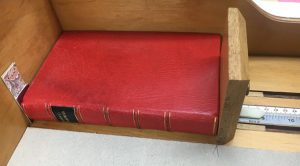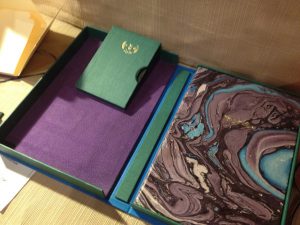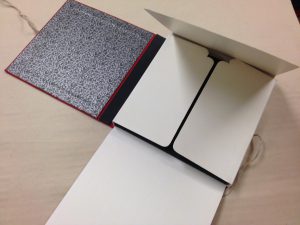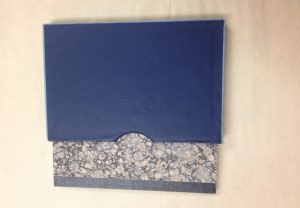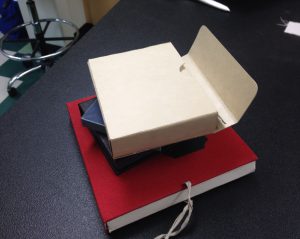When you stop to think about it, boxes make for very special enclosures. I’m sitting here, typing this blog and thinking of the many ways boxes are utilized on a daily basis. For example, there are mail boxes, tool boxes, boxes made for chocolates, shipping boxes, bread boxes, hat boxes, and shoe boxes. The list is long and impressive.
In my estimation, however, the finest box (in the bookbinding trade) is the Clam Shell box. There are variations on this enclosure, and some are the Slip case and the Four Flap with a case. All three styles were taught in a class I assisted in teaching last month at the John C. Campbell Folk School located in Brasstown, North Carolina. The class was aptly named “Protective Enclosures for Books.” These enclosures are not only the librarian’s best friend, they have also been made to please the artistic eye as well.
For the novice, making a clam shell box can be quite an overwhelming experience. Its success is marked by how precisely the measuring and cutting of the materials has been carried out. The thickness of the material used for covering the case and the inside linings, such as decorative paper, all need to be taken into account to arrive at an accurate measurement for cutting the trays and side walls of the box.
But even before that, the book itself must be carefully measured by its height, width, and thickness; the thickness being perhaps more tricky because, often times, the spine side can be thicker than the fore-edge.
[Marking] the advent of the mass-produced book...
At NEHGS, we have many books that, sadly, because of the era in which they were “born,” are now in poor condition. I say that because, as many of you may know, the advent of the mass-produced book led to the introduction of pulp in the mix, more specifically lignin – a very bad (highly acidic) ingredient indeed, as many of the pages of the genealogies in our library will attest.
Around 1850, paper especially took a nose dive as the content went from rags such as cottons and linens to wood pulp. The modern-day breakdown/deterioration of paper also has to do with the sizing (alum rosin) added into the slurry of the vat of pulp. The brittle paper needs to be enclosed in an acid-free, cool, and dry environment, i.e. with relative humidity and temperature complementing one another (that is, relative humidity at 50% and a temperature of 70 degrees F).
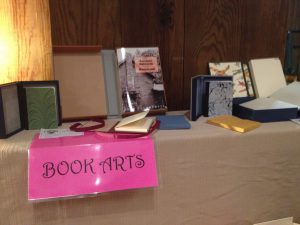 Images from the class “Protective Enclosures for Books.” Clockwise from upper left: student sample of a Clam Shell box and a slipcase resting in the inside front of box; foreflap with a cover (decorative paper on inside front cover); closeup of a slipcase; simple box enclosure made out of 20 pt. Bristol Board.
Images from the class “Protective Enclosures for Books.” Clockwise from upper left: student sample of a Clam Shell box and a slipcase resting in the inside front of box; foreflap with a cover (decorative paper on inside front cover); closeup of a slipcase; simple box enclosure made out of 20 pt. Bristol Board.
Below are some of the beautiful decorative boxes made during our week of learning how to build protective enclosures, as well as some more utilitarian boxes that are frequently used at the library but with no less effectiveness in preserving a book.
Share this:
About Deborah Rossi
Deborah Rossi is the Conservation Technician at NEHGS. She is responsible for the conservation and repair of the Society's book and manuscript collections. Deborah received her training at the North Bennet Street School in Boston.View all posts by Deborah Rossi →
